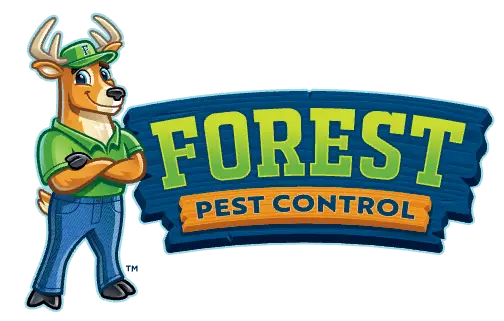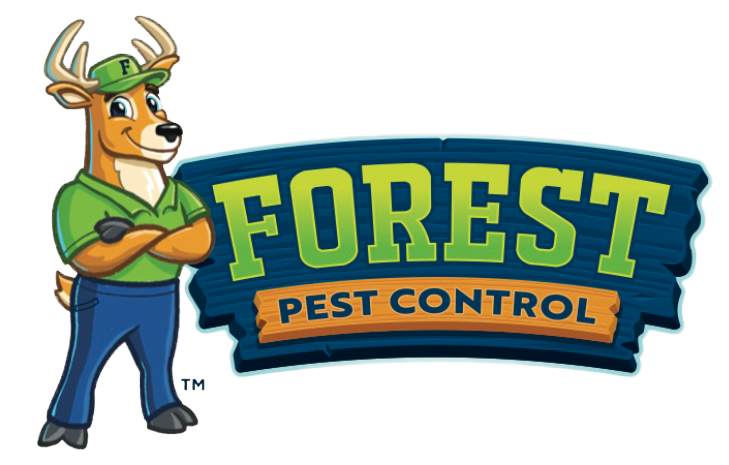Essential Pest Identification Guide for Homeowners
This comprehensive guide is designed to help homeowners identify common pest issues and recognize potential threats affecting both residential and commercial properties. For effective pest control, proper pest company selection is essential, especially when dealing with various local nuisances. In Central Florida, where pests are diverse and abundant, services such as wasp-exterminator and mosquito exterminator are critical for timely and effective treatment. Homeowners and business owners alike can benefit from recognizing early warning signs—such as unusual odors, visible droppings, or structural damages—before an infestation escalates. Forest Pest Control, rooted in 1991 with a commitment to Integrated Pest Management (IPM), serves as an essential resource for residents in Orange, Seminole, Lake, Volusia, and Osceola Counties.
In this article, we cover different categories of household pests—including insects (with targeted techniques like ant extermination and mosquito exterminator), rodents, arachnids, fabric and stored product pests, and occasional outdoor invaders (often requiring wildlife removal)—and provide practical advice on how to spot and manage their presence. By combining professional observations with actionable identification techniques and tips on pest company selection, the guide empowers property owners to take proactive measures in pest prevention. Each section delivers key insights and targeted strategies for maintaining a pest-free environment.
Recognizing Common Household Insect Pests
Understanding common household insect pests, including strategies such as ant extermination and pest company selection, is essential for a safe living environment. This section explains general insect behavior and key signs of their presence – for example, situations where a mosquito exterminator or wasp-exterminator may be needed – and how infestations can compromise health and property. Early detection is vital for preventing widespread problems.
Identifying Ants and Their Typical Behaviors
Ants leave behind trails marked by pheromones when foraging for food, which homeowners can notice on floors, walls, and countertops. They commonly invade kitchens and pantries in search of crumbs and spills. Certain species, like carpenter ants, may nest in wood and damage structures. In cases where the infestation becomes severe, ant extermination is often necessary to mitigate further risks. Recognizing the size, color, and behavior of ants provides clues to the infestation’s severity, making early pest company selection a key step toward effective control and prevention of significant damage.
Spotting Different Types of Cockroaches
Cockroaches are known for rapid reproduction and resilience in harsh conditions, often necessitating pest company selection to address infestations effectively. They leave behind dark droppings (frass) and a distinct musty odor. The German cockroach, for example, thrives in moist, warm areas such as kitchens and bathrooms. Their nocturnal habits make early detection challenging, but noticing their size, color, and favored locations is essential for determining the best pest control actions to prevent exponential growth of the population. Additionally, integrated pest management strategies may include bed-bug-extermination to tackle similar household pest problems.
Distinguishing Termites From Other Wood-Boring Insects
Termites feed on wood and cause severe structural damage over time. Unlike other wood-boring insects, termites live in large colonies and create protective mud tubes along walls and foundations. Common signs include discarded wings, mud tubes, and hollow-sounding wood. Since termite damage is often hidden until advanced, regular professional inspections are recommended to assess and manage the risk before significant deterioration occurs.
Identifying Flies and Their Breeding Areas
Flies not only cause annoyance but also spread diseases. They breed in garbage, decaying food, and animal waste. Houseflies may be seen hovering around refuse areas and kitchen bins. Their rapid life cycle means even a small infestation can quickly become unsanitary. Effective control includes maintaining sanitation, proper waste disposal, and sealing entry points. Observing fly larvae in drains or compost piles clearly indicates active breeding sites that require immediate cleaning.
Recognizing Bed Bugs and Signs of Their Presence
Bed bugs are parasitic insects that feed on human blood at night and hide in small crevices. Indicative signs include tiny blood spots on sheets, dark excrement marks, and a musty odor. Their ability to hitchhike on luggage, furniture, or clothing facilitates rapid spread. Because infestations are often unnoticed until they disrupt sleep or cause skin irritation, regular inspections of mattresses and furniture are essential. Early intervention is key to preventing the stress and discomfort that bed bug infestations cause.
A Homeowner’s Guide to Identifying Rodent Intruders
Rodents pose a significant risk by causing structural damage and spreading diseases. This section explains how to differentiate between common rodent species and recognize their presence, along with practical advice on limiting their access and reducing their impact.
Telling the Difference Between Mice and Rats
Mice are small, slender rodents with large ears and leave fine, powdery droppings, while rats are larger, have thicker tails, and leave larger, irregular droppings. Rats are more likely to gnaw on structural materials, whereas mice tend to remain hidden in secluded areas. Recognizing these differences is critical because it informs the choice of treatment methods, ensuring that pest control efforts are appropriately tailored to the specific rodent species present.
Finding Evidence of Rodent Activity in Your Home
Evidence of rodent activity includes droppings, gnaw marks, and greasy smudge marks along walls or floors. Rodents often create nesting sites in attics or basements using shredded fabric, paper, or insulation. Unusual nocturnal sounds, like scurrying or scratching, further indicate active infestations. Regular inspections along baseboards, behind appliances, and in storage spaces can help homeowners detect an infestation early before it escalates.
Understanding Common Entry Points for Rodents
Rodents can enter homes through small openings such as cracks in the foundation, gaps around windows, doors, or where utility lines enter. They can squeeze through openings as small as a quarter-inch. Identifying and sealing these entry points with caulk or steel wool is an important part of a long-term rodent prevention strategy to make your home less inviting to these pests.
Recognizing Damage Caused by Rodents
Rodents can damage property by chewing wiring, insulation, and wood, and by contaminating food. Such damage is often found in hidden spaces like attics, basements, or behind appliances. Regular professional inspections and prompt repair of any structural damage are necessary to mitigate both health risks and financial losses associated with rodent infestations.
Identifying Spiders and Other Arachnids in Your Residence
Spiders and other arachnids are frequently seen indoors. While many are harmless and even beneficial by preying on other insects, some species, like the brown recluse or black widow, can be dangerous. This section outlines how to distinguish harmless species from those that pose a risk and provides guidance on when to seek professional help.
Differentiating Common House Spiders
Common house spiders typically are small with neutral colors and exhibit non-aggressive behavior. They are often found in undisturbed areas such as corners, basements, or garages. By contrast, medically significant spiders—like the brown recluse—display distinct color patterns and body shapes, such as a violin-shaped marking. Knowing these differences helps homeowners decide when professional pest control intervention is warranted.
Recognizing Potentially Harmful Spiders
Species such as the black widow and brown recluse have venomous bites and can cause serious health issues. The black widow is distinguished by its shiny black body with a red hourglass, while the brown recluse has a violin-shaped mark. Immediate medical attention is crucial if a bite is suspected. Regular inspections in rarely disturbed areas can help detect these spiders early, reducing the risk of dangerous encounters.
Identifying Ticks and Mites That Affect Homeowners
Ticks and mites, though very small, can cause health issues such as allergic reactions or transmit diseases like Lyme disease. Ticks are often found in grassy or wooded areas and may attach to pets or humans, while mites can infest fabrics or carpets causing skin irritations. Being alert for small bite marks or unusual symptoms and keeping areas clean through regular vacuuming and pet grooming can help minimize their presence.
Locating Spider Webs and Other Signs
The presence of spider webs—whether large, irregular webs of orb-weavers or smaller cobwebs in corners and attics—indicates arachnid activity. Other clues include shed exoskeletons and occasional spider sightings. Regular cleaning and monitoring of these signs can help determine if an infestation is developing and if professional attention is needed.
Detecting Fabric and Stored Product Pests: A Homeowner’s Reference

Fabric and stored product pests can cause significant damage to clothes, textiles, and stored food supplies, leading to economic loss and health issues. This section provides key identification tips and prevention strategies for protecting home textiles and pantry items.
Identifying Clothes Moths and Carpet Beetles
Clothes moths and carpet beetles feed on natural fibers found in clothing, carpets, and upholstery. They leave behind irregular holes and yellowish droppings (frass). These pests can also trigger allergic reactions in some people. Homeowners should regularly inspect fabrics and stored textiles and use proper storage methods to prevent infestations from developing.
Recognizing Pantry Pests Like Indian Meal Moths and Weevils
Pantry pests such as Indian meal moths and various weevils attack stored grains and food products. Signs of an infestation include webbing around food items and the presence of small larvae. Regularly checking pantry items and sealing food in airtight containers can help prevent these infestations. Maintaining cleanliness in storage areas is essential for integrated pest management.
Inspecting Textiles and Stored Goods for Damage
Routine inspections of wardrobes, storage boxes, and pantry shelves can help identify early signs of pest damage like small holes, droppings, or webbing. Early detection allows for prompt intervention before infestations grow larger and cause substantial losses.
Understanding Conditions That Attract These Pests
Stored product and fabric pests flourish in environments with high humidity, poor ventilation, and abundant organic material. By maintaining low humidity levels, ensuring good ventilation, and regularly cleaning areas prone to moisture, homeowners can reduce conditions that attract these pests.
Spotting Occasional Invaders and Outdoor Pests That Enter Homes
Occasionally, pests from the outdoors may enter homes. These invaders—such as centipedes, silverfish, and stink bugs—usually seek shelter during seasonal changes or after heavy rains. Understanding why they enter and how to manage them is key to maintaining a secure living environment.
Identifying Centipedes and Millipedes
Centipedes are fast, predatory, and have many legs with a venomous bite, while millipedes are slower and feed on decaying matter. Both prefer moist environments such as areas near pipes or in basements. Since their presence is often temporary, controlling indoor humidity and sealing potential entry points can reduce regular occurrences.
Recognizing Silverfish and Firebrats
Silverfish and firebrats thrive in humid conditions and are known for their silvery appearance and undulating movement. They feed on starchy materials and are typically active at night. Regular inspections in moisture-prone areas like basements and bathrooms can help detect their presence early, allowing for swift cleaning and targeted control measures.
Identifying Boxelder Bugs and Stink Bugs
Boxelder bugs, usually red or black, are often seen near boxelder trees, while stink bugs release a pungent odor when disturbed. During seasonal transitions, these pests may gather near windows and doors. Simple measures like installing screens and sealing cracks can effectively keep these occasional invaders at bay.
Understanding Why These Pests Come Indoors
Outdoor pests typically enter homes in response to environmental shifts such as sudden temperature drops or heavy rains. By sealing cracks and maintaining proper exterior upkeep, homeowners can minimize the likelihood of these pests entering.
Locating Cracks and Crevices Used by Invading Pests
Small cracks around windows, doors, and foundations provide access for outdoor pests. Regularly inspecting and sealing these vulnerable areas using caulk or weather stripping creates a physical barrier that greatly reduces the opportunities for such pests to invade your home.
Utilizing This Pest Identification Guide for Home Protection

This guide empowers homeowners to effectively identify and manage pest infestations. By understanding pest behavior and recognizing early warning signs, proactive steps can be taken to protect both health and property. The following strategies emphasize the importance of intervention and when to consult professional pest control services.
Understanding Pest Behavior for Better Identification
Observing pest behavior—such as whether activity occurs during the day or night—can help pinpoint the type of pest and assess the infestation’s severity. For example, ants leave pheromone trails during foraging, while cockroaches are active at night. This knowledge allows homeowners to select more targeted control methods and reduce unnecessary chemical use.
Noting Signs of Pest Activity Such as Droppings and Noises
Subtle signs like droppings, unusual sounds, or damaged materials are key indicators of an infestation. Documenting these signs supports a more targeted approach when consulting with pest control professionals, ensuring timely intervention before the problem worsens.
Knowing When to Seek Professional Pest Identification Assistance
Although many pests can be identified by homeowners, situations involving venomous spiders or significant structural damage from termites or rodents require expert evaluation. Professional pest control services, such as those offered by Forest Pest Control, can confirm infestations and design effective treatment plans.
Using Identification for Effective Pest Prevention Strategies
Once pests are accurately identified, targeted prevention measures—such as sealing entry points and improving sanitation—should be implemented. A comprehensive pest management plan combines these preventative practices with periodic professional inspections to maintain a safe, pest-free home.
Finding Reliable Resources for Further Pest Information
Homeowners should continuously seek out reliable resources like academic research, local extension services, and reputable pest control companies to stay updated on pest behaviors and control methods. Ongoing education and periodic consultations with experts are crucial to long-term home protection.
Frequently Asked Questions
Q: What should homeowners do if they suspect a termite infestation? A: Inspect wood structures, crawl spaces, and basements for mud tubes, discarded wings, or hollow-sounding wood. Early detection and professional termite inspections are essential to prevent severe structural damage.
Q: How can I tell if bed bugs are present in my home? A: Look for small blood spots on bedding, dark excrement stains, and a musty odor near mattresses and furniture. Regular inspections and prompt professional treatment are recommended if bed bugs are suspected.
Q: What are the most common entry points for rodents? A: Rodents typically enter through small cracks in foundations, gaps around doors and windows, and openings where utility lines enter the building. Sealing these gaps is crucial for preventing infestations.
Q: How do I differentiate between harmless spiders and potentially dangerous ones? A: Harmless house spiders are usually neutral in color and non-aggressive. Venomous spiders like the brown recluse or black widow have distinct markings—a violin shape or an hourglass—and require professional attention if encountered.
Q: What preventive measures can reduce fabric pest infestations in the home? A: Maintain low humidity levels, regularly clean and vacuum storage areas, and use airtight containers for food and textiles. Periodic inspections for small holes or droppings can help detect infestations early.
Q: When should a homeowner contact a professional for pest control? A: If persistent signs such as continuous droppings, structural damage, or sightings of venomous spiders are observed, immediate professional pest control intervention is advised to prevent further damage.
Q: Can integrated pest management (IPM) be effective in controlling these pests? A: Yes, IPM combines monitoring, targeted treatment, and preventive measures to control pest populations while reducing environmental impact. This approach is effective for managing diverse pest issues in Central Florida.
Final Thoughts
This guide has provided homeowners with essential methods to identify a range of pests—from insects and rodents to occasional invaders and arachnids. Recognizing key signs and understanding pest behavior enables early detection and proactive management. With reliable information and professional support readily available, timely intervention can prevent significant property damage and health risks. Homeowners are encouraged to use the strategies outlined here and to consult trusted experts to maintain a pest-free environment.






